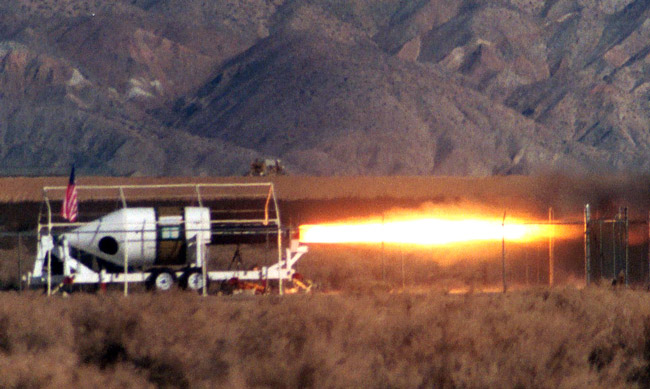No Major Engine Changes for SpaceShipOne, Builder Says

The rocketengine behind the privately built, piloted spacecraft SpaceShipOne will carrymore propellant and burn longer during a Wednesday space shot, but has notundergone any serious modifications since its historic June flight, accordingto its developer.
"We're notchanging anything," said aviation pioneer Burt Rutan, who developed thespacecraft with his Mojave, Californiafirm Scaled Composites, in a telephone interview to clarify an earlier story. "It's the same motor and the same tank."
SpaceShipOne'sengineis a hybrid rocket motor that burns liquid nitrous oxide, also known aslaughing gas, as an oxidizer and a solid fuel material found in rubber tires.The motor successfully propelled the piloted spacecraft to suborbital spaceduring a successful June 21 flight with civilian astronaut Mike Melvill at the controls.
Thespacecraft is one of about two dozen entries in the international Ansari X Prize competition to build and launch a reusable,three-person spacecraft to a suborbital altitude of 62 miles (100 kilometers).The first team to do so twice in 14 days wins $10 million.
During the Sept.29 flight, the rocket will carry about 150 more pounds of oxidizer and 10 extrapounds of rubber fuel than that used in SpaceShipOne'sfirst space shot. The launch is the first X Prize-qualifying flights for thespacecraft.
"Essentially,what we've done is added propellant to get more performance," Rutan said,adding the extra fuel and oxidizer should allow SpaceShipOne to fly a heavierweight, equivalent to two additional human passengers, to the target altitude."We have not been using this time scrambling to make modifications."
Thedevelopment of SpaceShipOne's engine has been anin-house effort by Scaled Composites, though some components were developed andsupplied by four separate vendors, including Thiokol, AAE Aerospace,Environmental Aeroscience Corp and SpaceDev.
Breaking space news, the latest updates on rocket launches, skywatching events and more!
Rutan saidSpaceShipOne engineers are not squeezing every ounce of performance out of thespacecraft's engine, but are looking forward to this week's launch, since manyproject team members are contributing small items to ride aboard the spacecraftas ballast.
"Our goalis to have an operable suborbital spacecraft at least as safe as the earlyairliners," he said, adding that SpaceShipOne'shybrid engine is a safety breakthrough. "If we're going to have space tourism,we need greater safety for any manned spacecraft."

Tariq is the award-winning Editor-in-Chief of Space.com and joined the team in 2001. He covers human spaceflight, as well as skywatching and entertainment. He became Space.com's Editor-in-Chief in 2019. Before joining Space.com, Tariq was a staff reporter for The Los Angeles Times covering education and city beats in La Habra, Fullerton and Huntington Beach. He's a recipient of the 2022 Harry Kolcum Award for excellence in space reporting and the 2025 Space Pioneer Award from the National Space Society. He is an Eagle Scout and Space Camp alum with journalism degrees from the USC and NYU. You can find Tariq at Space.com and as the co-host to the This Week In Space podcast on the TWiT network. To see his latest project, you can follow Tariq on Twitter @tariqjmalik.
